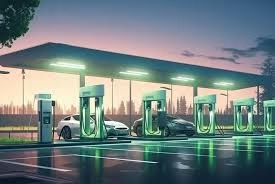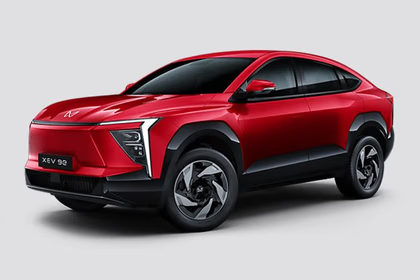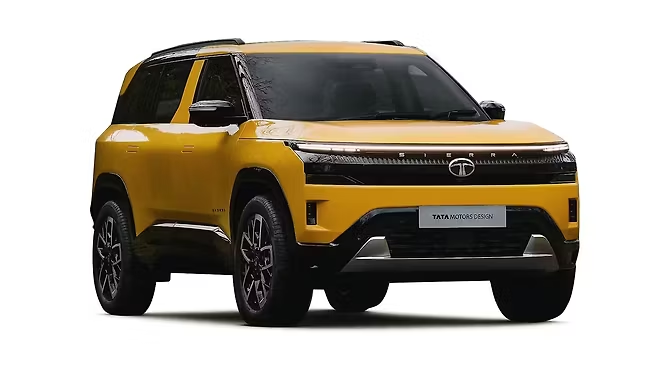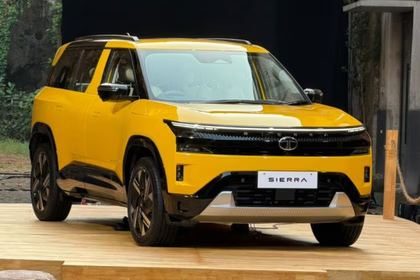Introduction
India is witnessing a quiet yet potent revolution on its roads — the rise of EV Charging Stations. From stylish two-wheelers, such as the Ola S1 and Ather 450X, to mainstream electric SUVs like the Tata Nexon EV, Indians are increasingly making the transition to clean, green transportation. This transition isn’t merely about new cars; it’s about an entirely new system, and at its center is one key component: charging infrastructure.
EVs require a trusted, convenient, and speedy charging system to reach their full potential. With no charging points at the right places, even the most efficient EV can become a daily nuisance.

- Indian EV owners have two major choices for charging:
- Home charging is convenient for overnight and daily refilling.
- Public Charging, found at malls, highways, offices, and standalone EV stations, is ideal for road trips and short top-ups.
As India transitions to a future of green mobility, knowing how to charge your EV, be it an Ola scooter, a Nexon SUV, or an Ather bike, is just as vital as selecting the proper model. Let’s dive into how this revolution of Charging is evolving.
Types of EV Charging Stations in India
Electric cars are becoming the norm; therefore, all EV owners need to be aware of the various types of charging stations available. All chargers are not made the same — some are perfect for slow overnight Charging at home, but others are designed for quick top-ups on long journeys. Here’s a handy breakdown for Indian users:
AC Slow Charging
It’s the most popular and cheapest way to charge. It commonly uses a regular 15A socket or a wall-mounted AC charger.
- Where it’s applied: Houses, offices, apartment buildings
- Charging time: 4 to 10 hours (battery size-dependent)
- Ideal for: Overnight charging of Ola S1, Ather 450X, Nexon EV
DC Fast Charging
Built for speed, DC chargers charge the battery faster using higher voltages without going through the onboard converter.
- Where it’s available: Highways, subway stations, shopping malls, EV stations
- Charging duration: 0–80% within 30 to 60 minutes for EV cars
- Ideal for: Long-distance journeys, fast top-up on the move
Charging Levels
- Level 1: Normal 3-pin plug – very slow (for emergency purposes only)
- Level 2: Wall-box AC charger (3.3 kW–7.2 kW) – perfect for home/office
- Level 3: DC fast charger (30 kW and higher) – located at public charging stations
Every level is appropriate for various EV requirements — scooters can function on Level 1 or 2, whereas EV automobiles are best served by Level 2 on residential premises and Level 3 on highways. Knowing which level your EV is capable of will ensure faster, smoother, and safer charging every time.
How to Charge Ola S1, Ather 450X, Tata Nexon EV & More
EV charging in India is becoming simpler, thanks to the growing number of networks and intelligent apps. Yet, each EV possesses its own charging compatibility, connector type, and network access. Here’s how to charge some of the best-selling EVs in India:
Ola S1 / S1 Pro
Ola scooters are compatible with both home and fast chargers.
- Charging options: Standard 5A home socket or Ola’s Hypercharger network
- Charging time: 0–100% in 4–6 hours at home; 50% in just 18 minutes with Hypercharger
- Smart features: The Ola Electric app assists in monitoring battery health and locating nearby Hyperchargers
Ather 450X
Ather scooters come equipped with wireless connectivity to the company’s charging network.
- Charging network: Ather Grid – chargers every 1.5 km in most metro cities
- Charging rate: 1.5 km of range per minute at most
- Usage: Tap with RFID card or use the Ather app to initiate/terminate Charging
Tata Nexon EV (Prime / Max / EV Facelift)
India’s best-selling electric SUV has CCS2 charging alone.
- Charging options:
- Home: Tata’s 3.3 kW AC wall box charger
- Public: Tata Power, ChargeZone, Zeon, and others’ DC fast chargers.
- Charging time: 0–80% in ~60 minutes using a 30–50 kW DC fast charger
Other EVs (MG ZS EV, BYD Atto 3, TVS iQube, Bounce Infinity, etc.)
All of these have varying charging ports and network availability:
- MG ZS, BYD Atto 3: CCS2 fast charging support
- TVS iQube, Bounce: Home sockets compatible and chargeable, as well as compatible stations
- Standard connectors to familiarize yourself with:
CCS2: Installed in Nexon, MG, BYD
- Type 2 (AC): Installed in home/public AC chargers
- Bharat AC001/DC001: Installed in older chargers, not as handy for new EVs
Smart App Ecosystem:
- Tata EZ Charge – Handy for Tata EVs
- Static – Handy across brands
- Relux, ChargeZone, Jio-bp Pulse – Handy for highway and city fast charging.
Largest EV Charging Networks in India (2025 Updated)
EV uptake is booming in India, and charging networks are competing to catch up, with thousands of charging points now available along highways, in urban centers, and even in small towns. Whether you drive a Tata Nexon EV or an Ather 450X, here are the largest and most convenient charging networks to be familiar with in 2025:
Tata Power EZ Charge
India’s largest EV charging network, with over 5,000 charging points, is expanding rapidly.
- Available in the top cities, highways, and residential societies
- Supports CCS2, Type 2 AC, and Bharat AC001 standards
- Integrated with Tata Motors EV ecosystem (Nexon, Punch, Tiago EV)
Ather Grid
Other scooters are among India’s most innovative and convenient charging networks.
- Available in 25+ cities, covering prime locations every 1–2 km
- Rapid Charging at 1.5 km/h
- RFID and app-based entry for plug-and-play ease
Jio-bp Pulse
A Reliance-BP tie-up with a strategy to electrify highways and city centers.
- Petrol pump, metro, mall, and expressway charging stations
- Fast DC charging for vehicles and larger EVs
- Future-proof with solar and smart charging integration
Static
A rapidly expanding third-party app-based network with access to all EV brands.
- Present in 35+ Indian cities
- Real-time availability, booking, and payment for chargers via the app
- Scooters, 3-wheelers, and cars (Type 2 & CCS2) supported
How to Find Charging Points Around You
It’s never been easier to find an EV charging point around you, thanks to sophisticated apps and integration with online maps. Whether on a weekend getaway or for a quick top-up, these apps ensure you’re never left without options.
Top EV Charging Apps for India
- PlugShare – International app with reviews from the community, charger pictures, and location filters
- Static – Real-time status, bookings, payments, and navigation assistance for all EVs
- Tata EZ Charge – Best for Tata EV owners; displays Tata Power charging stations with rates and occupancy information
- Google Maps (EV filter) – Filter search for “EV Charging Station” to view nearby stations by brand, connector type, and open status
What You Can Check Before You Go:
- Real-time availability – Avoid crowded or offline chargers
- Compatibility of plug types – CCS2, Type 2, Bharat AC/DC
- Charging speed – AC slow or DC fast
- Cost per session estimated – Based on kWh or time-based pricing
- Reviews from users – Useful in spotting faulty or unsafe chargers
Public Charger Access
- RFID Cards – Offered by networks such as Ather, Tata Power, Jio-bp
- UPI/QR Payments – Most chargers are now capable of direct payment through UPI apps (PhonePe, GPay, Paytm)
- App Wallets – Load funds into the app for a single tap to charge
EV Charging Cost in India – Home vs Public
An electric vehicle has reduced running expenses. But exactly how much does it cost to charge an EV — and is home charging more affordable than public Charging? Let’s calculate:
Home Charging (AC Slow)
Home charging of your EV is the most economical way.
- Average per-unit cost: Rs 7–Rs 10 (state electricity tariff-based)
- Cost per km: Approximately Rs 2–Rs 4/km for most electric vehicles
- Suitable for: Ola, Ather, Tata Nexon, Tiago EV, overnight daily charging
- Installation needed: 15A socket for 2-wheelers, wall box charger (3.3–7.2 kW) for 4-wheelers
Public Charging (DC Fast)
Faster, easier, but pricier — ideal for quick fill-ups and highway usage.
Typical rate: Rs 15–Rs 24 per kWh (provider & location-based)
Service charges: Apps/networks charge differently with Rs 20–Rs 30 session charges or GST
Best suited for: Long journeys, emergencies, fleet/taxi owners
Subscription Models vs Pay-per-Use
Subscription Plans:
Ola Hypercharger: Free for an initial 1 year (S1 Pro), paid plans thereafter
Ather Grid: Free fast Charging for 1 year, then subscription (approx. Rs 700/month)
Pay-per-Use:
- Most public charging points provide UPI/Wallet-based one-time payment
- Static, Jio-bp, Tata EZ Charge offer pay-as-you-go
Example Cost Calculations:
Tata Nexon EV (40.5 kWh battery)
- Home full charge: Rs 400 (at Rs 10/unit) → ~300 km → Rs 1.3/km
- Fast charger: Rs 900 (at Rs 22/unit) → Rs 3/km
Ather 450X (3.7 kWh battery)
- Home full charge: Rs 30–Rs 40 → ~110 km → Rs 0.35/km
- Ather Grid: Free (initially), later Rs 1–Rs 1.5/km equivalent
Ola S1 Pro (4 kWh battery)
- Home full charge: Rs 40 → 120 km → Rs 0.33/km
- Ola Hypercharger: Free for 1 year → charged later (Rs 1/km)
Home EV Charger Installation
Having a home charger installed is one of the most intelligent moves an EV buyer can make — it’s convenient, budget-friendly, and ensures your car is always ready to go. Here’s what you should know about having a home EV charging station installed in India:
How Installation Works
The majority of EV makers (Tata, MG, Ola, Ather, etc.) include a standard OEM charger with the car.
- Book an installation visit with the brand’s authorized technician
- A certified electrician tests your meter capacity and wiring
- Charger (wall-mounted or portable) is installed close to your parking spot
1–2 hours and basic civil/electrical work if the socket is not already available
Power Load Required
- It can be charged from a standard 15A household socket
- No additional load is required unless more than one device is connected to the circuit
- Electric Vehicles (Tata Nexon EV, MG ZS EV, BYD, Tiago EV):
– Requires a separate 3.3 kW to 7.2 kW AC wall box charger
– Upgrade to single-phase 3.5 kW or three-phase 7.5 kW+ load recommended
– Notify your local electricity board (DISCOM) if the load exceeds the domestic limit
Government Subsidy & DISCOM Guidelines
Most state DISCOMs provide subsidization for charger installation (Rs 5,000–Rs 15,000)
- Delhi, Maharashtra, and Tamil Nadu have independent EV-friendly policies and load relaxation regulations
- Installation of separate EV meters promoted with discounted tariffs in certain states (e.g., Rs 4.5/unit in Delhi)
- Incentives apply to smart chargers that monitor power consumption and integrate with solar installations
Battery Tips While Charging
EV battery is the vehicle’s heart, and every heart requires the proper kind of treatment to survive longer and work constantly. Regardless of whether you have an Ather, Ola, Tata Nexon EV, or MG ZS, here are crucial battery tips while charging to ensure your EV remains healthy:
Do Not Charge to 100% Always
Charging to 100% every day may seem like a good plan, but it will ultimately stress the battery. Lithium-ion batteries, which are used by most newer EVs, last longer when not always charged to the top.
- Reserve 100% charging for road trips only
- Stop charging daily at 80–90%
Adhere to the 20%–80% Rule.
Slow Charging for Normal Use
- Home AC slow charging is kinder and more suitable for long-term longevity
- DC fast charging is convenient in emergencies or on the go, but produces more heat and stress
- Repeated fast charging = quicker degradation after months
Don’t Leave Plugged in Overnight Unnecessarily
Most EVs automatically cut power at max charge, but residual current and heat seepage can still affect battery longevity.
- Unplug when it reaches your desired charge
- Employ the car’s scheduled charging timer (if it has one) to make this happen automatically, safely
Government Plans & Future of EV Charging in India
The Indian government is moving forward to develop a robust EV charging ecosystem, not only for current vehicles but also for the future of innovative and sustainable mobility. Here’s what’s unfolding in policy, infrastructure, and Innovation:
FAME II Incentives for Charging Infrastructure
Under the FAME II (Faster Adoption and Manufacturing of Hybrid and Electric Vehicles) scheme:
- Subsidies are being offered to install public charging points in cities and on highways
- Targeting metros, Tier-1 & Tier-2 cities, and public transportation stations
- DISCOMs and private players are incentivized through ease-of-business and financial incentives
NHEV Highway Corridors: Delhi–Jaipur & Delhi–Agra
- Development of India’s first National Highway for EVs (NHEV) is ongoing
- Pilot corridors such as Delhi–Agra and Delhi–Jaipur now have fast chargers every 20–30 km
- Equipped with inbuilt rest stops, battery exchange stations, and multi-EV support
- Goal: Transform highways into completely EV-compatible routes for intercity travel
Smart Charging, V2G, and Solar Integration
India is gearing up for next-generation charging technology:
- Smart Chargers: Load balancing, timed charging, grid-aware operation
- V2G (Vehicle to Grid): Next-generation EVs will be capable of feeding power back to the grid during peak demand
- Rooftop Solar Powered EV Charging Stations: Increasingly, DISCOMs are combining rooftop solar with charging to minimize carbon footprint and expense
EV-Ready Buildings & RERA Guidelines
MoHUA has issued notifications to render new real estate developments EV-ready. Here, MoHUA is representing the Ministry of Housing and Urban Affairs:
- RERA obliges new apartments, shopping malls, and commercial buildings to have separate EV charging provisions
- Municipal governments of cities such as Mumbai, Delhi, Bangalore, Chennai are revising building bylaws to make EV points compulsory
- State policies (such as in Maharashtra, Karnataka, Delhi) offer rebates on transformer upgradation for residential societies fitting chargers
With AI-driven energy management and mobile charging trucks in the pipeline, India’s EV ecosystem is transforming into a more innovative, cleaner, and more convenient system, poised to serve not only a handful of early movers but the entire country.
Conclusion
EV’s greatest fear was not the range but where to park the car to charge it. Fast-forward to 2025, and that anxiety is fading fast.
Ola, Ather, and other companies have established a robust city-wide charging infrastructure for electric scooters, with riders never more than a couple of kilometers from a charging station. EV vehicles such as the Tata Nexon EV and MG ZS EV, meanwhile, are now supported by a countrywide network of fast highway chargers, urban centers, and even tiny towns — courtesy of the likes of Tata Power EZ Charge, Statiq, and ChargeZone.
For everyday use, home charging is the preferred option; it is easy to install, costs little, and features intelligent timers. And when you’re on the move, a glance at your EV app or Google Maps is all it takes to spot a charger, check its availability, and pay through UPI — all within seconds. By 2025, charging won’t be an obstacle — it will be part of the EV way of life. Simple, digital, and more and more everywhere.
FAQs
Q1. Can I charge a Tata Nexon EV at an Ather Grid station?
No. Ather Grid is designed explicitly for Ather scooters and features a proprietary connector. The Tata Nexon EV requires a CCS2 charger, which Ather Grid doesn’t support.
Q2. Is the Ola Hypercharger free for life?
No. The Ola Hypercharger is available for free for the first 12 months from the date of purchase (on select models, such as the S1 Pro). Beyond that, usage can be paid for through subscription plans or a pay-as-you-use model. Depending on your city and Ola’s new policies.
Q3. What happens if I run out of battery while driving?
If your EV runs out of charge along the way:
- Dial your EV manufacturer’s roadside support (Tata, Ola, Ather provide this)
- Mobile charging vans are available in some cities these days
- As a safety measure, always find nearby chargers via apps such as PlugShare or Statiq before long trips
Q4. What is the lowest-cost EV charging app available in India?
Prices fluctuate, although home charging is the most cost-effective option. Among public ones:
- Static and Relux tend to have lower prices (~Rs 15–Rs 18/kWh)
- Some stations backed by DISCOM might offer discounted tariffs
- Subscription packs should be checked if you have frequent charging issues
Q5. Can I install a fast charger at home?
Yes, with some conditions.
- You can fit a 7.2 kW AC fast charger (Level 2) in your home for EV vehicles such as Nexon EV or MG ZS
- Needs proper wiring, a special circuit, and maybe a load upgrade from your electricity supply company
- DC fast chargers (30 kW+) are not suitable or possible for home use because of the power requirement and cost




